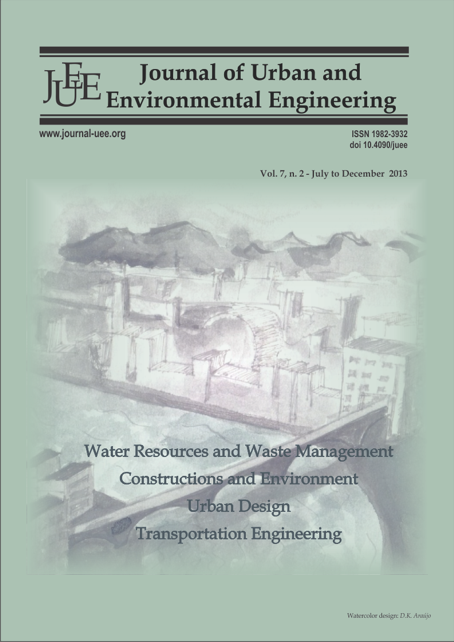MODELLING AND MAPPING OF SOIL EROSION ON THE OUED EL MALLEH CATCHMENT USING REMOTE SENSING AND GIS
DOI:
https://doi.org/10.4090/juee.2013.v7n2.302-307Keywords:
Soil erosion, RUSLE, Sedimentation, Remote Sensing, El Oued Mellah, MoroccoAbstract
In Morocco, the spectacular expansion of erosive processes shows increasingly alarming aspects. Due to the considerable costs of detailed ground surveys for studying this phenomenon, remote sensing is an appropriate alternative for analyzing and evaluating the risks of the expansion of soil degradation. According to an FAO study (2001), Erosion threatens 13 million ha of cropland and rangeland in northern Morocco and induces an estimated average water storage capacity loss of 50 million m3 each year through dam silting. The lost water volume could potentially be used to irrigate 5000 to 6000 ha / year. This study analyses soil erosion on the Oued El Malleh catchment, a 34 km2 catchment located in the north of Fez (Morocco). This contribution aims at mapping the spatio-temporal evolution of land use and modelling the erosion and sedimentation processes using the well known RUSLE model. Land use changes were assessed using Landsat-5 TM and Landsat-7 ETM+ images, from the 1987-2011 periods which were validated by field studies. The images were first georeferenced and projected into the Moroccan coordinate system (Merchich North) then processed to evaluate soil loss through a GIS package (Idrisi Andes Software). These static assessments of soil loss were then used in a deposition/sedimentation algorithm to model soil loss propagation to the downstream. The soil loss averages determined by the model vary between 1.09 t/ha/yr as a minimum value for the reforested lands and 169.4 t/ha/yr as a maximum value for the uncultivated lands (badlands). The latter generally correspond to Regosols or low protected soils located on steep slopes. In comparison with RUSLE, the sedimentation model yields lower values of soil losses; only 97.3 t/h/year for the uncultivated lands, and -0.34 t/ha/year in the reforested land, indicating an on-going sedimentation process. By taking into account the temporal variability of erosion and deposition jointly lower values of soil erosion are calculated by the RUSLE model. However, despite this decline, land degradation problems are still important due to the combination of land use and local lithology. The results of this study were used to indentify areas where interventions are needed to limit land degradation processes.Downloads
Download data is not yet available.
Downloads
Published
2013-12-08
Issue
Section
Articles




